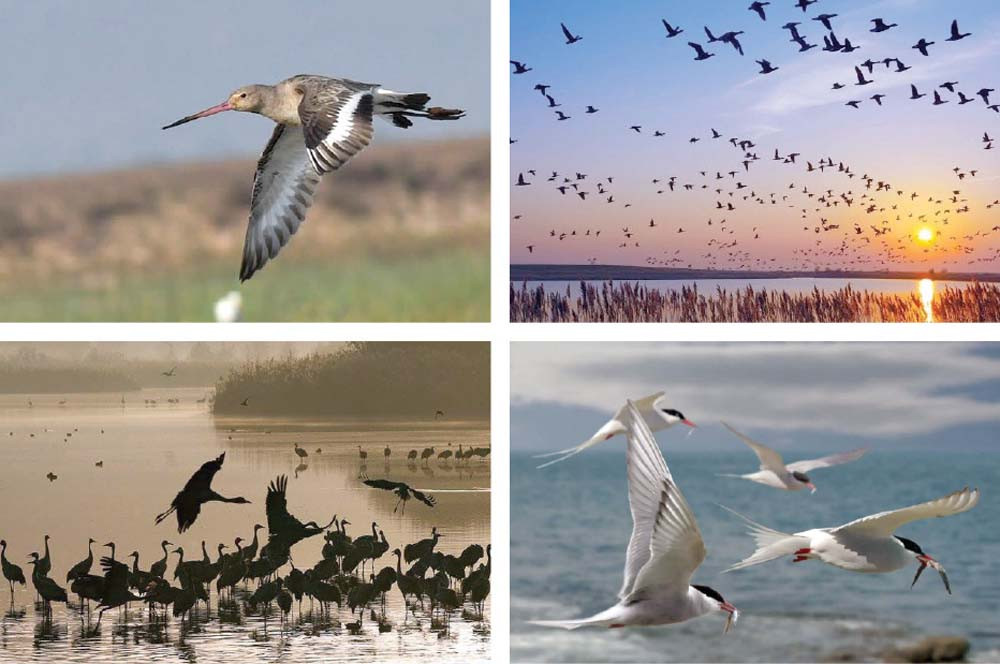Number of migratory birds on the rise
Wildlife dept census records an increase of 49,000 avian guests landing in Sindh

The number of migratory birds flying south to the wetlands of Sindh to escape the frigid cold of the Tundra region was recorded at around 661,537, as per the annual bird survey of the Sindh Wildlife Department (SWD). This year the number is more than 49,000 as compared with the last winter.
Though there is no check-in for the feathered guests who are only fair weather friends, coming with the winter and leaving with spring, SWD uses traditional method of counting with the help of telescope.
Conservation teams from villages, towns and districts send reports which are then compiled for estimated number of birds and their species.
According to Sindh Wildlife Conservator Javed Mehar, at the beginning of the winter season, the influx of migratory birds from all over the world, including Siberia, begins.
These migratory birds travel thousands of miles through the Indus Flyway Zone and head for wetlands across Sindh, including Karachi. The process of their arrival starts from the month of November every year.
After a stay of four months, these avian guests return their homeward journey in March. These migratory birds include both aquatic and terrestrial birds.

In the past, a large number of them were reported in different wetlands of Sindh including Karachi. However, due to climate change and wetland shrinkage and some other factors, the numbers remained low.
The Sindh Wildlife Department has released a survey report on migratory birds based on census conducted in January and February this year.
He said that during the recent survey, 16 species of waterfowls, 78 species of wedding birds and more than 80 species of other miscellaneous birds were recorded.
According to Javed Mehar, besides Karachi, survey teams were formed in Sanghar, Nawabshah, Nowshero Feroze, Dadu, Shaheed Benazirabad, Larkana, Qambar Shahdadkot, Thatta and other districts of rural Sindh.
The teams remained continuously active in Hawke's Bay, Hub Dam, Korangi Creeks and other wetlands like Manchar Lake, Kenjhar Lake and Haleji Lake.
According to Mehar, the most tried and tested method is the use of telescope. During this census, a square is drawn in the vicinity of any water body and other devices including spotting scope are installed near it. The number of birds perched in this frame is counted. The same process is repeated over a distance of a few kilometers and this number is compiled gradually.
The number of guest birds was 741,042 in 2019, 248,105 in 2018, 153,916 in 2017 and 1.5 million in 2015. In the 1991 census, the number was recorded at 1,756,890. It should be noted that this series of bird census has been going on since 1972 by the SWD.
The SWD conservator said hunting was allowed under licence in the past. However, a ban was placed to save the depleting population of the migratory birds. Meanwhile, more drastic measures were taken in 2020 to address these factors under which Sindh Wildlife teams were given the status of Wildlife Protection Police and its good results not only appeared in the form of increase in the number of birds this year but also 42 suspects were arrested for illegal bird hunting. In addition to punishments, fines of more than Rs250,000 were imposed. Cases of some suspects are pending in the trial courts.
Published in The Express Tribune, March 5th, 2022.



















COMMENTS
Comments are moderated and generally will be posted if they are on-topic and not abusive.
For more information, please see our Comments FAQ